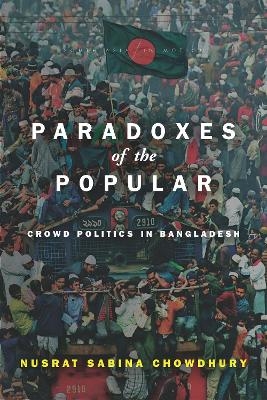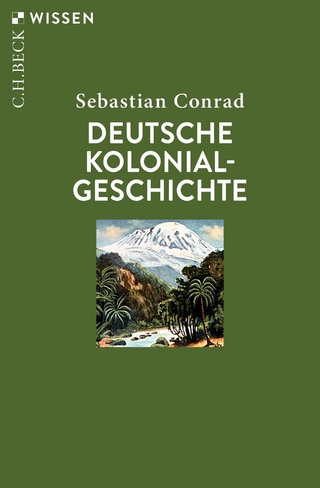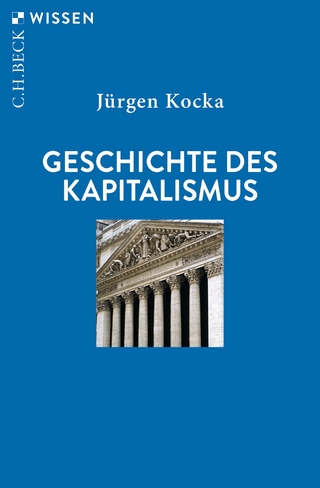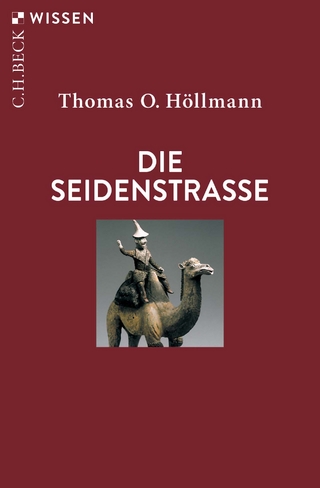
Paradoxes of the Popular
Stanford University Press (Verlag)
978-1-5036-0886-3 (ISBN)
Few places are as politically precarious as Bangladesh, even fewer as crowded. Its 57,000 or so square miles are some of the world's most inhabited. Often described as a definitive case of the bankruptcy of postcolonial governance, it is also one of the poorest among the most densely populated nations. In spite of an overriding anxiety of exhaustion, there are a few important caveats to the familiar feelings of despair—a growing economy, and an uneven, yet robust, nationalist sentiment—which, together, generate revealing paradoxes. In this book, Nusrat Sabina Chowdhury offers insight into what she calls "the paradoxes of the popular," or the constitutive contradictions of popular politics. The focus here is on mass protests, long considered the primary medium of meaningful change in this part of the world. Chowdhury writes provocatively about political life in Bangladesh in a rich ethnography that studies some of the most consequential protests of the last decade, spanning both rural and urban Bangladesh. By making the crowd its starting point and analytical locus, this book tacks between multiple sites of public political gatherings and pays attention to the ephemeral and often accidental configurations of the crowd. Ultimately, Chowdhury makes an original case for the crowd as a defining feature and a foundational force of democratic practices in South Asia and beyond.
Nusrat Sabina Chowdhury is Assistant Professor of Anthropology at Amherst College.
Contents and AbstractsIntroduction chapter abstractThis chapter introduces the idea of "paradox" to make sense of the contingencies that make up Bangladesh's political modernity as well as the constitutive paradoxes of popular sovereignty. I introduce the Bangla term janata as a vernacular iteration of the concept of the crowd of social and political theory. Drawing on literary representations and scholarly work, the chapter shows why the crowd is the ethnographic object and analytical locus of the book. It sets the theoretical and conceptual stage for locating in the crowd the energy, agency, and indeterminacy of mass politics.
1Picture-Thinking chapter abstractIn chapter 1, I analyze a set of public texts in circulation during a state of emergency—letters published in newspapers, a national identification card, a controversial photograph. Doing so has two ends: First, the chapter expands on the impasse that South Asian democracies often experience when confronting the relationship between sovereignty and citizenship. In this logic, a repressive and undemocratic governmental apparatus is blamed for the underdeveloped political rationality of its citizens. For the same reason, sovereignty as domination is justified as a way to protect the masses from their own nature. Second, the chapter expounds on the presumed distinctions between a reading public versus unruly crowds. The letters written by Muhammad Yunus, the Nobel Prize–winning "guru of micro credit," remind us how the distinction between the stranger/citizen and an embodied crowd was mobilized at this time so as to usher in a novel era in politics.
2Seeing Like a Crowd chapter abstractAgainst the backdrop of the transparency fetish of the emergency, Phulbari's protest culture presents an alternative politics of seeing—what I describe as "seeing like a crowd." By identifying the significance of money in aesthetic productions and political acts, I show how the preoccupation with money differed from the nationwide drive against corruption. The chapter focuses first on a painting by a Phulbari artist. I argue that its message contrasts with the viciously apolitical desire for efficiency and good governance in a globally recognized language of neoliberal transparency. I then present the recollections of a socially marginalized woman who became the face of grassroots mobilization. I situate the looting and burning of money by the crowds within the larger context of the national political crisis. These popular strategies were a form of a transparency-making enterprise, if only with different political effect than the anticorruption agenda of the state.
3Accidental Politics chapter abstractChapter 3 is an ethnographic account of the accidental, the contingent, and the imperceptible nature of crowd politics. To understand the political possibilities of accidents and to assess their ethnographic significance, in this chapter I approach accidents both literally and conceptually. Can accidents be political? What kinds of politics take shape in the wake of an accident? And what are the ethico-political possibilities that are made available, or are foreclosed, within various discourses of the accidental? Anthropological perspectives on accidents, I argue in this chapter, rescue the concept from its usual modernist and technicist moorings while opening up spaces of radical contingencies that are enframed in local logics of culture and politics.
4Crowds and Collaborators chapter abstractCollaboration, in the sense of working for the enemy and benefiting from it, has given rise to a particular kind of crowd politics. From the vantage point of most protesters, a collaborator (dalal) was a figure that straddled the boundaries of the community and whatever stood beyond it. A dalal was by definition a local, though his ties to the foreign were exposed through suspicion, gossip, jokes, and assaults. Chapter 4 examines this culture of accusation of collaboration in order to illuminate the entangled effects of aggressive resource extraction, collective sovereignty, and popular and state-initiated attempts at settling the score with the nation's past. Following Walter Benjamin's writing on the "intriguer" and scholarly interest in the "neighbor," I submit that the dalal is a third type that disturbs the duality of friend and enemy. This ambivalence produces a culture of doubt and suspicion that demands certainty, often through violence.
5The Body of the Crowd chapter abstractChapter 5 is located in post-emergency Bangladesh. Its primary sites are spaces of politics and activism that are both emergent and historically poignant. I explore a particular fascination with the body and its relationship to crowd politics in the context of protests against the International Crimes Tribunal. The chapter comments on the proliferation of technologies that has impacted social and political communication. Increased surveillance in public spaces indicates more rigorous efforts to control spaces and bodies, illustrated by two events I analyze: an exposé of public sexual harassment and a viral video of a public lynching. On the one hand, I argue, secular and religious crowds, in their desires to be seen and heard, often end up mirroring each other. On the other hand, individual social media users often act collectively, performing the excess and volatility associated with crowds.
Conclusion chapter abstractIn August 2017, the Supreme Court's Appellate Division released the text of a verdict that scrapped the sixteenth constitutional amendment. Passed in 2014, the amendment gave Parliament the power to remove Supreme Court judges for misconduct or incapacity. After it went public, Chief Justice Surendra Kumar Sinha faced the wrath of politicians and party loyalists. "No nation, no country is made of or by one person," Sinha wrote in a judgment partly aimed at salvaging the collectivity that played a formative role in achieving national independence. This single line was excerpted and disparate meanings were tagged onto it in order to cast Sinha as disloyal. The fact that his relatively straightforward commitment to a normative assumption of liberal democracy was enough to cost him his job reveals a heightened role of paranoia in Bangladeshi politics. Indeed, it has raised anew the paradoxes of popular sovereignty and political representation in Bangladesh.
| Erscheinungsdatum | 08.07.2019 |
|---|---|
| Reihe/Serie | South Asia in Motion |
| Verlagsort | Palo Alto |
| Sprache | englisch |
| Maße | 152 x 229 mm |
| Themenwelt | Geschichte ► Teilgebiete der Geschichte ► Wirtschaftsgeschichte |
| Sozialwissenschaften ► Ethnologie ► Völkerkunde (Naturvölker) | |
| Sozialwissenschaften ► Politik / Verwaltung | |
| Sozialwissenschaften ► Soziologie | |
| ISBN-10 | 1-5036-0886-7 / 1503608867 |
| ISBN-13 | 978-1-5036-0886-3 / 9781503608863 |
| Zustand | Neuware |
| Haben Sie eine Frage zum Produkt? |
aus dem Bereich


